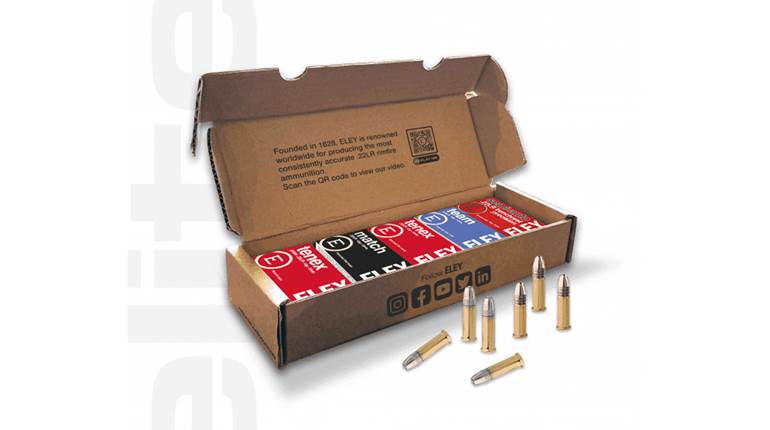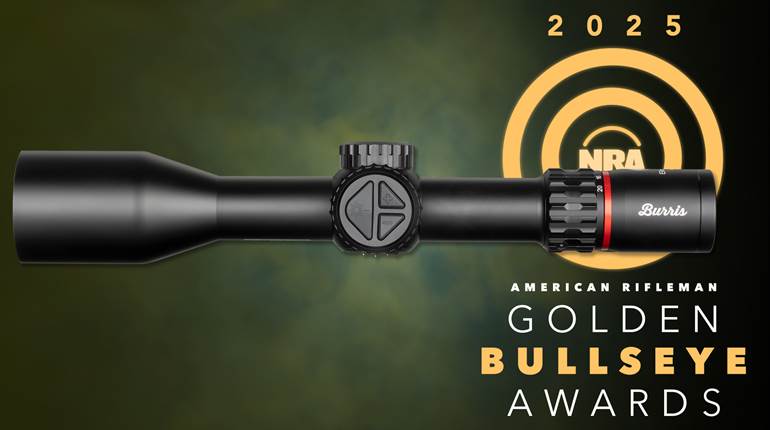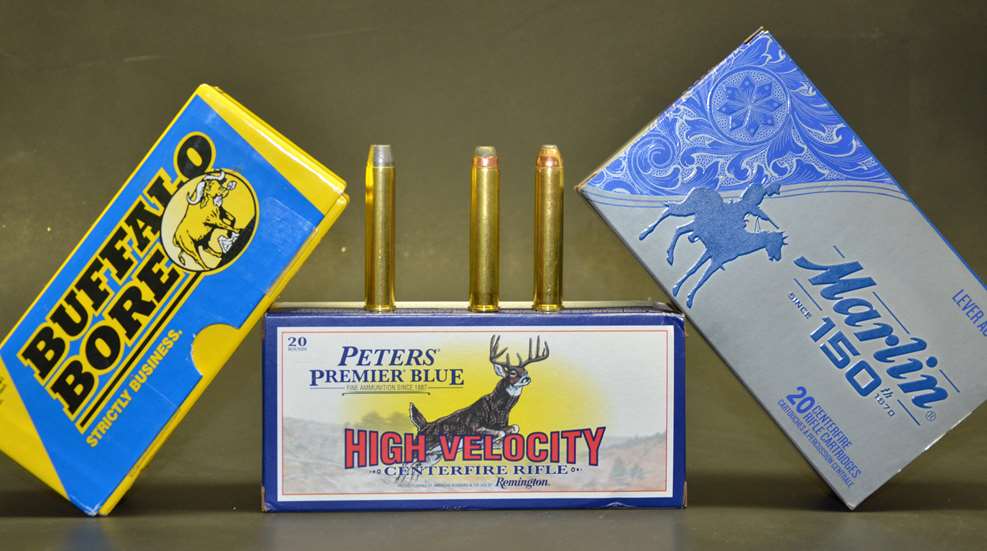
Shortly after celebrating his 18th birthday in 1854, John Mahlon Marlin became an apprentice at American Machine Works of Hartford, Conn. He received no compensation for the first six months of his employment, but his weekly pay for the following six months zoomed to: $1.50.
Marlin eventually became a master machinist and toolmaker, and around 1863, he began manufacturing small single-shot pocket pistols with names like Never Miss and Victor. Ballard rifles were also built. He founded Marlin Firearms in 1870, and his first successful centerfire repeating rifle was the Model 1881. The .45-70 Gov’t. was quite popular among hunters in those days, and the Model 1881 was the only lever-action rifle chambered for it. Oliver Winchester probably did not sleep a single night until the John Browning-designed Model 1886 in .45-70 was coming off the production line during that year.
In 2020, Marlin Firearms celebrated the company’s 150th birthday by building a limited number of Model 444 rifles with special serial numbers. Among the custom features are a 24” half-octagon/half-round barrel with six-groove rifling at a twist rate of 1:20”. The ladder-style rear sight was made by Skinner Sights, and a front sight with gold-colored bead was dovetailed to the barrel. The receiver was nicely engraved with John Marlin’s signature inlaid with gold.
The waved cap of the pistol grip and setback of the comb’s nose at the top of the grip on the commemorative model will appear odd to modern Marlin owners, but both are reminiscent of high-grade rifles built by Marlin during the 1800s. This style of comb made the upper surface of the grip long enough to allow an aperture sight attached to the tang of the receiver to be folded down for access to open rear sight or when the rifle was stowed. Sights made by Pope, Marble’s and others were available. Lyman still offers very nice tang sights, and one of them is worn by the Marlin 336 in .38-55 Winchester I used to take a huge black bear on Vancouver Island.

Several chamberings in commemorative packaging were also introduced at the time, and the .444 Marlin loaded with the Remington 265-grain soft-nose bullet is among them. This commemorative load was the first time Remington ever made .444 cases with the Marlin headstamp.
The Model 444 rifle was introduced in 1965, and the action differs from the Marlin Model 336 action only by minor internal modifications made to accommodate the .444-cal. cartridge. In those days, a number of formulas for determining cartridge effectiveness floated about, and Marlin introductory advertisements in American Rifleman touted the .444 Marlin as having a higher “Knockout Value” than the .338 Win. Mag. A photo showed a section of 3/8”, cold-rolled steel that had been penetrated by the 240-grain bullet.
Several variations of the Model 444 have been available over time. The original 1965 version with a straight grip, Monte Carlo-style stock and 24” barrel was replaced in 1971 with the Model 444 Sporter having a curved-grip stock and 22” barrel. At that time, the designation was changed to Model 444S (Sporter). The 22” barrel remained standard, but exceptions that spring to mind are the Model 444P Outfitter with 18.5” barrel and the Model 444 Express Long Range with 24” barrel. Traditionalists cried out in the night in 1994 when a hammer-blocking manual safety was added, and the rifle became the Model 444SS. There is some recoil, and the brick-hard rubber butt plate on that gun made me wonder if anyone at Marlin had ever actually shot a Model 444.

Marlin introduced micro-groove rifling in .22-cal. barrels in 1953 and by 1956, centerfire rifles also had it. Whereas it had taken an hour to cut the old Ballard-style rifling with the scrape-cutter method, a barrel could be button-rifled in less than five seconds. The Model 444 was introduced with a 12-groove barrel with a rifling twist rate of 1:38, and in 1999, it was replaced by six-groove rifling with a 1:20 twist. I have Model 444 rifles with both types of rifling. I find six-groove rifling to be more accurate with cast lead-alloy bullets, but if bullet hardness is around 15 BHN (Lyman No. 2 alloy), the 12-groove barrel can be accurate enough. Prior to buying a bullet mould, a micro-groove barrel should be slugged to determine actual groove diameter because some barrels do exceed .429”.
Accuracy of my rifles is about the same with jacketed bullets weighing up to 280 grains. The six-groove rifle is accurate with all 300-grain jacketed bullets, but the 12-groove rifle is accurate only with bullets of that weight made by Sierra and Swift. Of lesser importance to those who properly maintain a rifle, the six-groove barrel tolerates more shots between cleanings than the shallow rifling of the 12-groove barrel. The production of Model 444 rifles ceased in 2011, resumed in 2017 and then ceased again in 2020 following Remington Outdoor’s bankruptcy. The Winchester Model 94 has also been available in .444 Marlin.
Before leaving the subject of barrels, years of manufacture for my older 12-groove and six-groove rifles are 1995 and 2002, respectively. A rifle produced several years ago, during the Remington days, has joined them and using a Lyman Bore Cam to compare rifling quality proved to be interesting. Land surface of the micro-groove barrel is quite smooth but from breech to muzzle, deep tool marks run across the bottoms of the grooves. This along with shallow grooves may explain why it requires more frequent cleanings. Lands and grooves of the early six-groove barrel are quite smooth with only a few minor tool marks and the barrel recently made by Remington is the same.
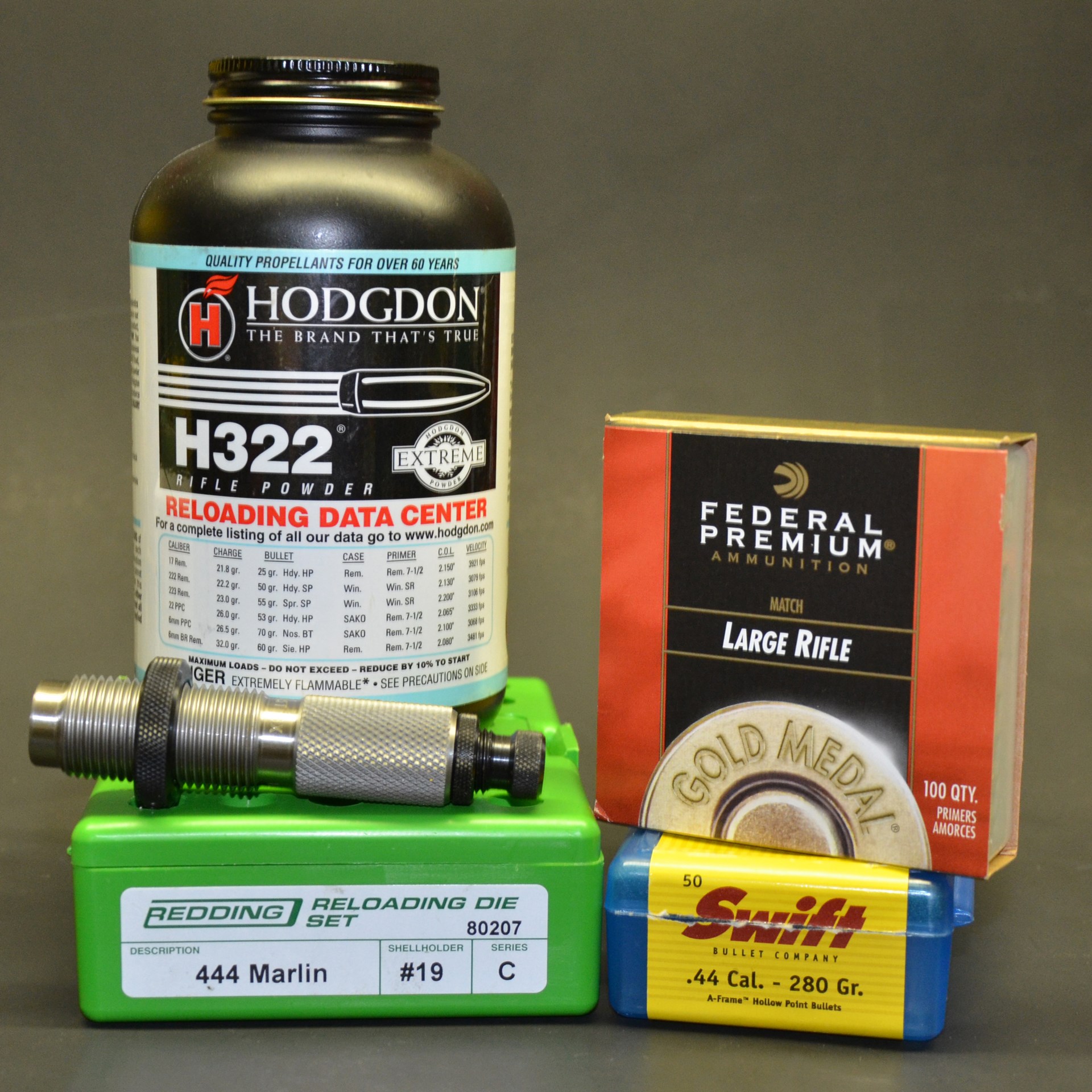
The .444 Marlin was a brainchild of Marlin employees Thomas Robinson and Arthur Burns. They made the first cases from unfinished .30-06 Sprg. brass before it was necked down and the rim turned to its final diameter. Burns presented prototype ammunition and a rifle chambered for it to Earl Larson at Remington, and since an official name for the cartridge had yet to be decided on, the first test ammunition loaded by Remington was head-stamped “.44 Mag”, because that bunter was on hand. It was later changed to “444 Marlin.” The ammunition featured the same 240-grain bullet being loaded by Remington in the .44 Mag.
Advertised velocity was 2,400 f.p.s., reduced to 2,350 f.p.s. soon after the barrel of the Model 444 rifle was shortened to 22”. The 240-grain bullet proved to be sudden death on deer, but elk and moose hunters desired more penetration on quartering shots, so in 1982, a 265-grain soft point at 2,120 f.p.s. was added. It was discontinued around 2010, but has returned to the Remington Express ammunition lineup with an average velocity of 2,239 f.p.s. from my rifles. Demand for the .444 Marlin increased when several shotgun-only states legalized the use of certain straight-wall centerfire cartridges.
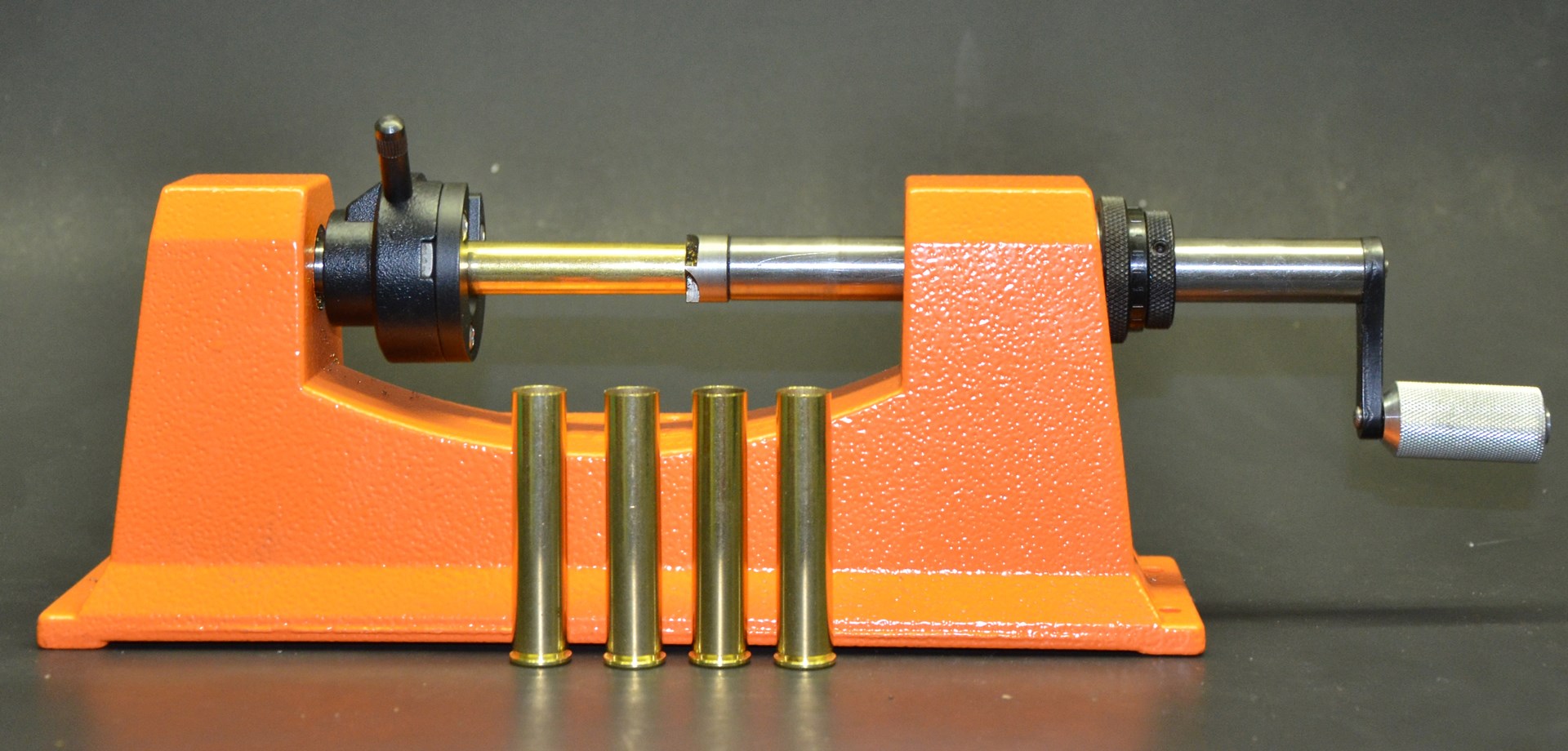
The .444 Marlin is often incorrectly described as a lengthened version of the .44 Mag. The two cartridges do share the same rim and bullet diameters, but body diameter just forward of the extraction groove of factory ammo usually measures 0.464” to 0.467” for the .444 Marlin and 0.451” to 0.453” for the .44 Mag. SAAMI maximum chamber diameter for the .444 Marlin is 0.4747” so firing the .44 Mag. in a .444 Marlin rifle could result in a ruptured case and should not be done.
Marlin’s .444 is an excellent candidate for handloading and should length variation in a batch of cases exceed 0.003”, trimming all to the same length will uniform roll-crimping. Three dies are needed. After running a case through a full-length resizing die, the expander die is used to slightly bell its mouth for smooth insertion of a bullet. After priming and charging, the third die is for bullet seating and roll crimping. Any standard large rifle primer works fine. Propellants with the correct burn rates include H322, H335, H4198, Reloder 7, Reloder 10X, Accurate 1680, VihtaVuori N120 and Vihtavuori N130.
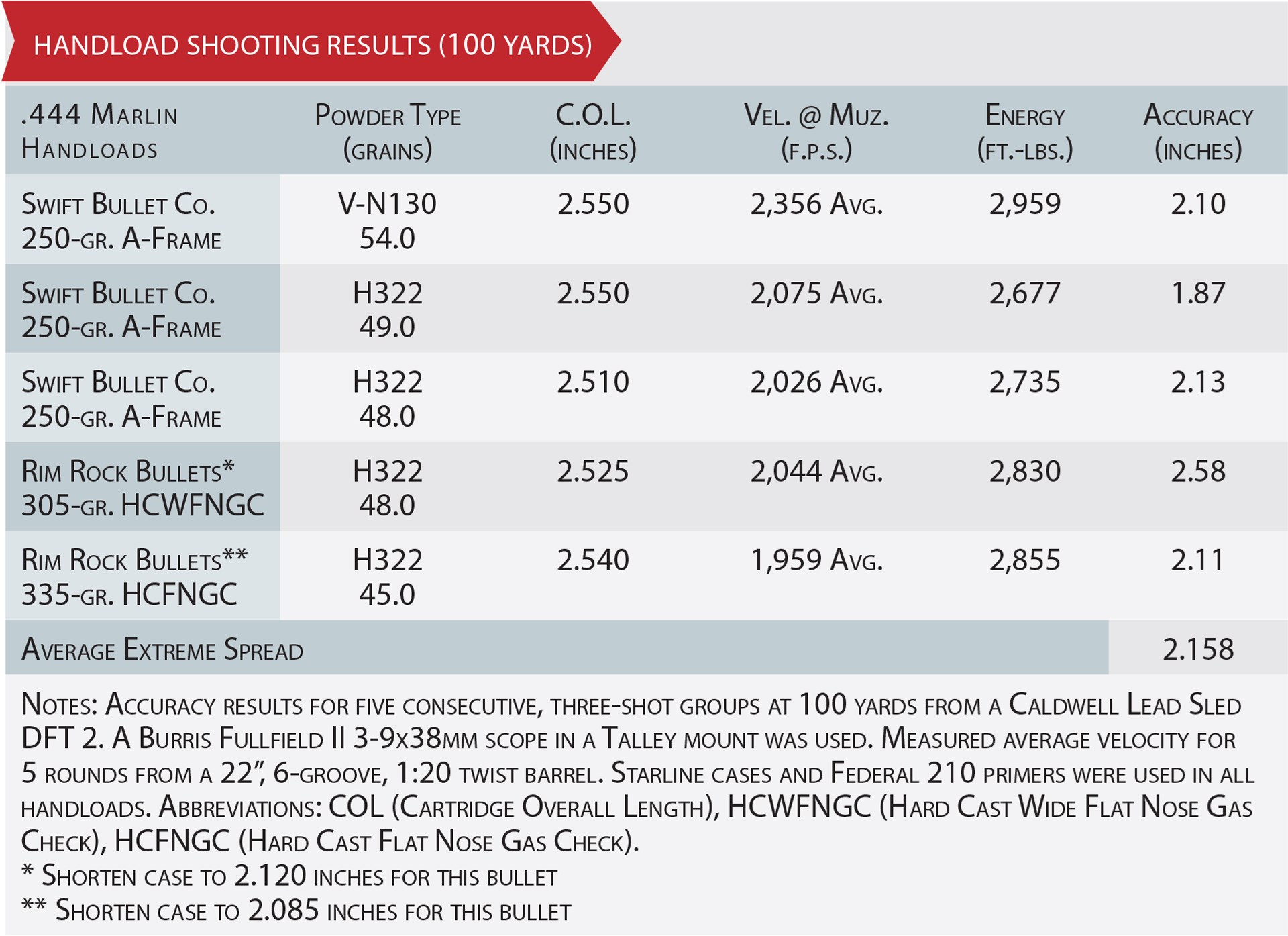
A number of suitable bullets are available for the .444, with the Swift 240-grain A-Frame, Speer 270-grain Deep Curl SP and Hornady 265-grain FTX among the more popular. I mostly use Swift A-Frames because they expand nicely and never fail to retain enough weight to penetrate deeply. The 240-grain version is quite effective on deer, and while other bullets of that weight kill them just as dead, the tougher construction of the A-Frame is my ace in the hole in case a descendent of Hogzilla comes strolling by. Friends of mine have successfully used the 240-grain A-Frame on moose and elk, but for anything bigger than deer and hogs, I prefer the 280- and 300-grain versions due to higher sectional densities.
A hard-cast, lead-alloy bullet weighing 300 grains or heavier with a wide flat on its nose is a serious bone-crusher and penetrator, and it tracks a straight channel through tough muscle and dense bone. I would not hesitate to hunt any North American game, including Alaskan brown bear, with the .444 loaded with one. In order for a cartridge to successfully turn the corner and enter the magazine when pushed through the loading gate, long-nose cast bullets have to seated to a specific overall cartridge length. With the Rim Rock 305-grain bullet loaded to a length of 2.540”, it won’t make the turn, but seat it 0.020” deeper in the case, and it slips right into the Marlin magazine. Slight differences in nose length and flat diameter can matter; the 335-grain Rim Rock with its smaller nose flat feeds smoothly at 2.540”. Loading those two requires shortening cases to 2.120” for the 305-grain bullet and 2.085” for the 335-grain bullet. Doing so aligns the mouth of the case with the crimp groove of the bullet when it is seated to the required cartridge length. Shortening cases decreases capacity, and they should be kept separate from full-length cases.
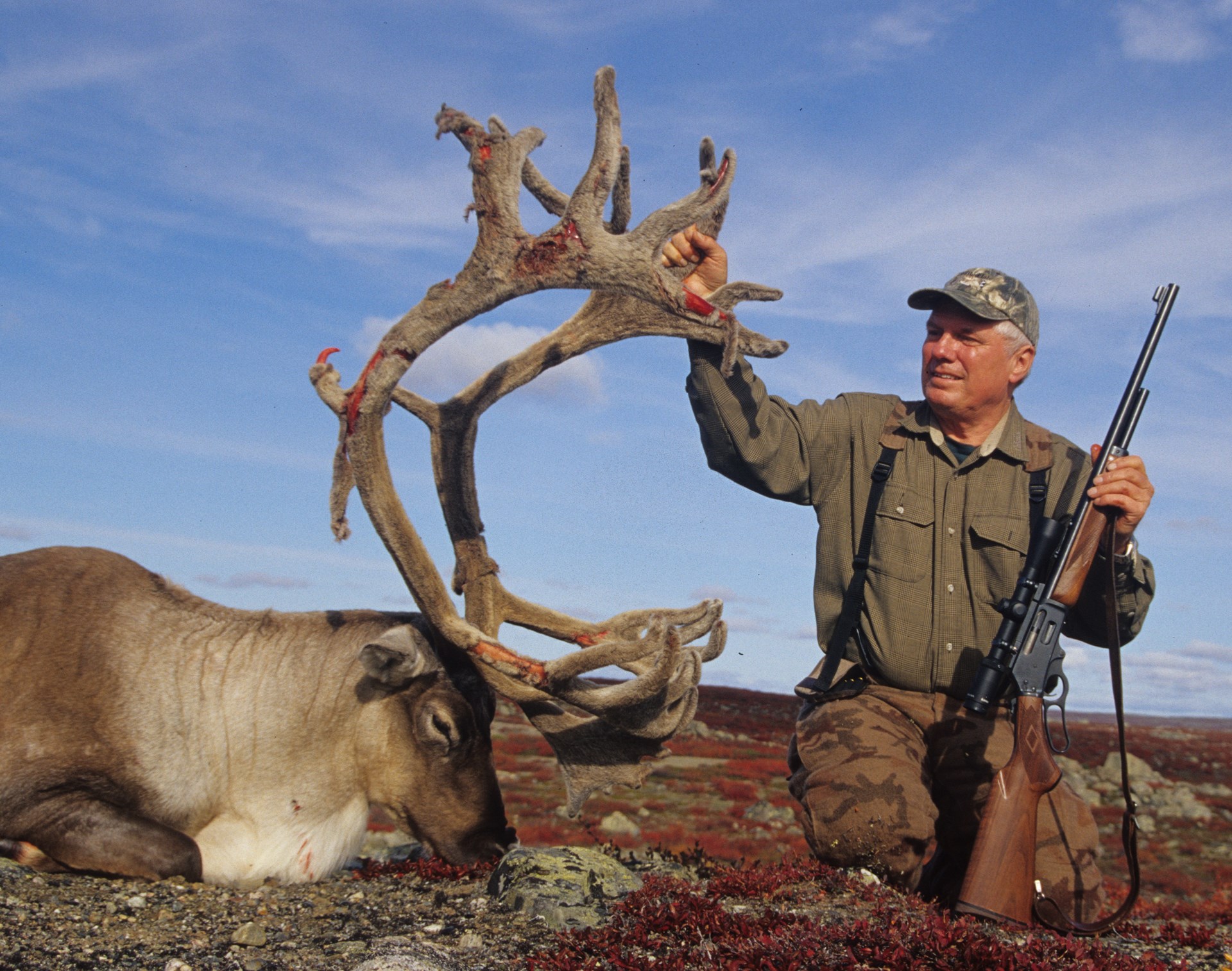
The .444 Marlin has fans in other countries. I have hunted moose several times in Finland and Sweden and am always surprised at the number of hunters there who use the cartridge. A few years back, I participated in a driven-game shoot in the Transylvania region of central Romania, and a French lady used a custom Marlin Model 444 with battue sights to bump off the biggest boar taken by our rather large group.
I will close with my favorite .444 Marlin story. While cramming for an upcoming college exam, I took a short break and picked up a magazine belonging to my roommate. An article on the brand-new Marlin Model .444 rifle included a photo of a Marlin executive and a caribou taken with it. Prior to returning to my studies, I vowed to do that someday. As fate would have it, in 2003, just over 40 years later, Tony Aeschliman of Marlin invited me to accompany him on a hunt for barren-ground caribou in the Northwest Territories of Canada. As you might guess, the Model 444 was my immediate choice. I still have the rifle, and it still wears the same Burris 3-9X Fullfield scope with Ballistic Plex reticle.
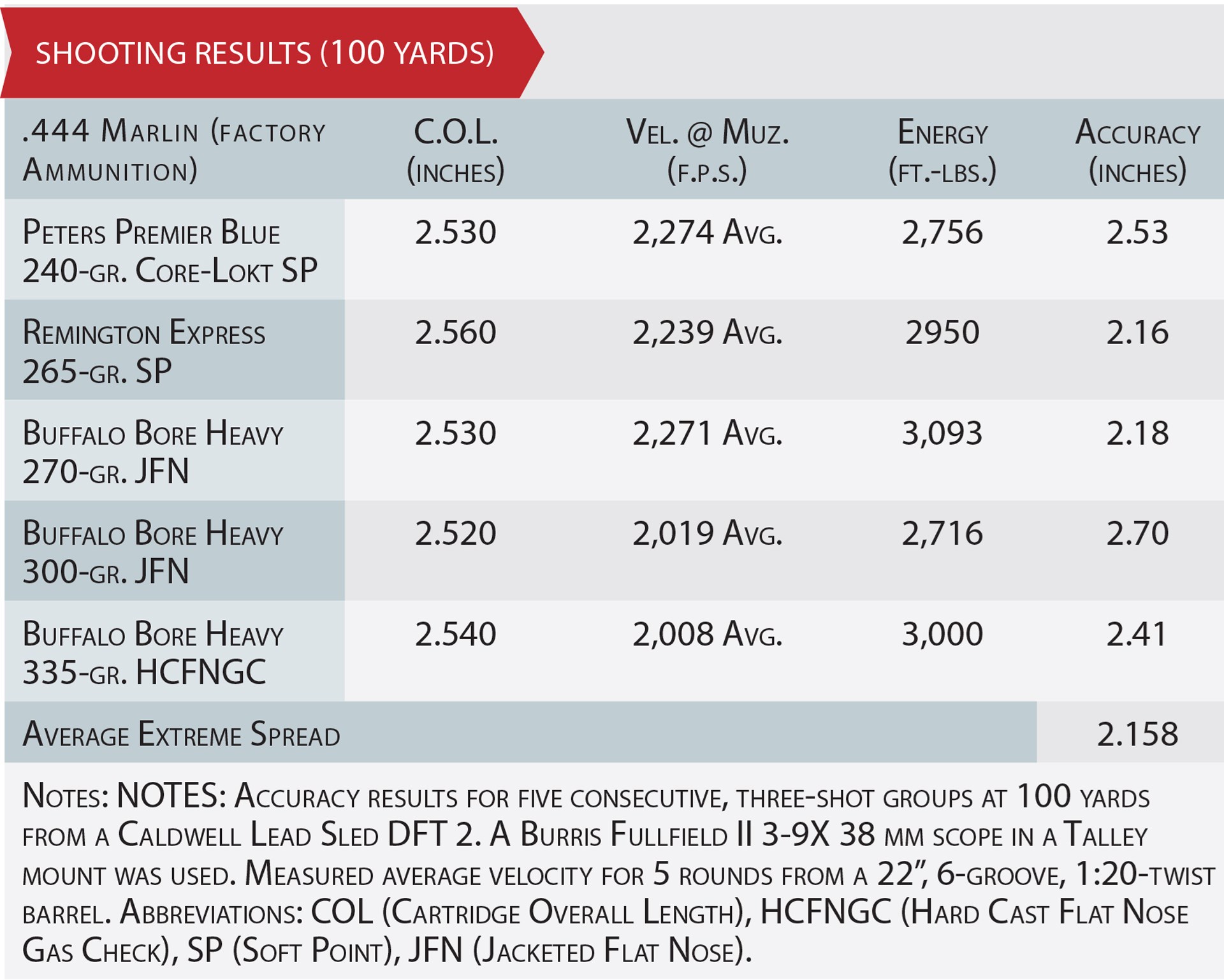
I used a handload with the Swift 280-grain A-Frame, and realizing that most caribou hunting is in open country where shots can be long, I checked the trajectory of the bullet by shooting targets placed in 50-yard increments out to 300 yards. Five-shot groups at that distance averaged around 5”, and residual energy was just over 1,000 ft-lbs. With the rifle zeroed 3-1/2” high at 100 yards, using the first and second hash marks on the lower quadrant of the Ballistic Plex reticle put me dead on at 250 and 300 yards. With a laser rangefinder in my pocket along with bit of luck in judging drift on windy days, I felt confident in my ability to place a bullet where it had to go at distances not commonly associated with a rifle and cartridge designed for fairly close shots in wooded country.
Days filled with long walks eventually turned up a good bull at 240 yards. Going prone and resting the Marlin rifle across my daypack, I held about six inches into the wind and just before trigger squeeze, the vow made many years ago in a college dorm room flashed through my mind.












